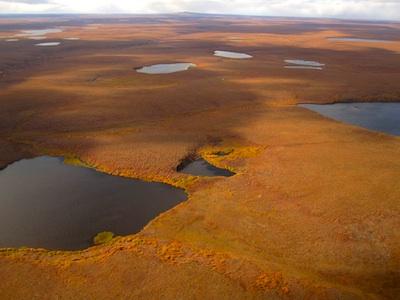A scattering of bones from a Woolly Mammoth that died more than 12,000 years ago are leading researchers to better understand how the landscape now within Bering Land Bridge National Preserve once appeared. Additional studies could indicate whether the animal died naturally, or was hunted.
The species, Mammuthus primigenius, generally is thought to have gone extinct about 10,000 years ago. The partial remains of one individual were discovered in a shallow lake at the national preserve in July 2012 by Amy Larsen, an aquatic ecologist with the National Park Service's Arctic Network, and pilot Eric Sieh of the Park Service and U.S. Fish and Wildlife Service.
"Initial observations included two limb bones, a tooth and a few large unidentified elements," a park release said.
Two months later, in September 2012, a follow-up trip led to the discovery of the "semi-articulated humerus and ulna (front leg bones) of the mammoth, as well as some partial rib and vertebra fragments," the release added.
Carbon 14 dating of the bones indicated they were approximately 12,400 years old. "... of particular interest to archaeologists is the fact that this age places the mammoth within a timeframe that may coincide with the initial appearance of humans in this part of the world," noted the release.
Along with collecting the bones, the researchers also described and collected sediment and peat samples that are expected to "help researchers ... reconstruct the past local environment in which the mammoth lived and help us to better understand the formational process acting upon the thaw lake in which it was discovered."
Researchers from the Western Arctic National Parklands and the University of Alaska Fairbanks are hoping to acquire funding to continue research at the site. For instance, the park release notes, questions that beg answers include "How complete is the mammoth skeleton? What other species may be present? Were early human hunters involved in the death of this animal? What vegetation covered the area some 12,000 years ago? What caused the death of this animal and, ultimately, the extinction of the entire species?"


 Support Essential Coverage of Essential Places
Support Essential Coverage of Essential Places







Comments
Terrific story. This is exactly why the Bering Land Bridge National Preserve was set up, because of its value as an ecological and paleontological reserve.